By Monica Alma, Content Creator for Vamos Academy.
Argentina is a mainly Catholic country. God appears in the Introduction of our Constitution, which says: “summoning God’s protection, source of reason and justice”. Also, public servants such as ministers, deputies, and even the President can choose to swear to God when they assume their responsibilities. This is why Argentine people have a big list of virgins, saints, and pagan saints. As well as why some social rights are so hard to get, like when Legal Abortion was firstly debated in Congress in 2015.
Unlike churches and temples in Europe, the entrance in Argentina is completely free in the majority of churches and temples. And we have diverse churches and temples for everyone. Here is a list of 5 emblematic churches in Buenos Aires you won’t want to miss!
These are the top 5 popular churches in Buenos Aires, Argentina:
Basílica Nuestra Señora del Pilar Church
Next to the Recoleta Cemetery and in front of Plaza Francia, is the impressive Basilica of Pilar. It’s the second oldest church in Buenos Aires with very well preserved colonial architecture. In its interior, it preserves the original baroque style. According to its website, when it was first built it was the highest point of the city and sailors used to look at it for orientation. You should visit the historic cloisters (there’s an entrance fee) where different artworks are displayed: oils, books, furniture, liturgical robes and different images. Nearby the Basilica there’s a lot of bars and restaurants where you can grab a bite. On the weekends, there’s also a Market in Plaza Francia you should check out.
Address: Junín 1898, Recoleta
How to get there: You can take the subway, line H, and both Las Heras Station as Facultad de Derecho will leave you a few blocks away. Buses that drive you to the Basilica: lines 130, 93, 67, and 92.
Also read: The Holy Land Theme Park in Buenos Aires
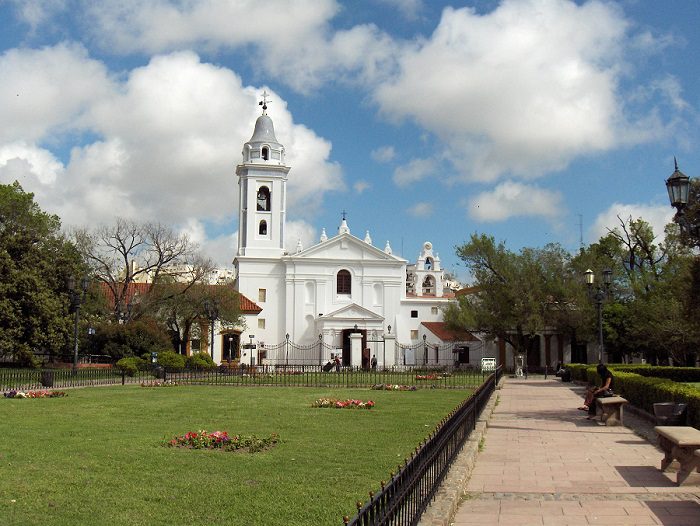
Catedral de San Isidro – San Isidro Cathedral
In the heart of the barrio of San Isidro, surrounded by trees, you can find the San Isidro Cathedral. It has Neo-gothic architecture. The main tower of the Cathedral has a length of 68,65 meters. The walls are made of stone and bricks (hence the colors red and white in its facade) and stained-glass windows crafted in France. Its creation accompanied the foundation of the city of San Isidro. It was declared a “National Historical Place”. The building was featured in some Argentinian films such as “El Clan” by the director Pablo Trapero, starring the actor Guillermo Francella. It doesn’t have guided visits. Plus, they have online church services on their website. In front of the Cathedral, you can find a beautiful open Market.
Address: Av. Libertador 16.200 (San Isidro, Buenos Aires Province)
How to get there: Buses line 60, 168. Train: Tren de la Costa, Station San Isidro and Train Mitre, Station San Isidro. Is 39 minutes away by car from Capital Federal.
Also read: PALACIO BAROLO BUENOS AIRES
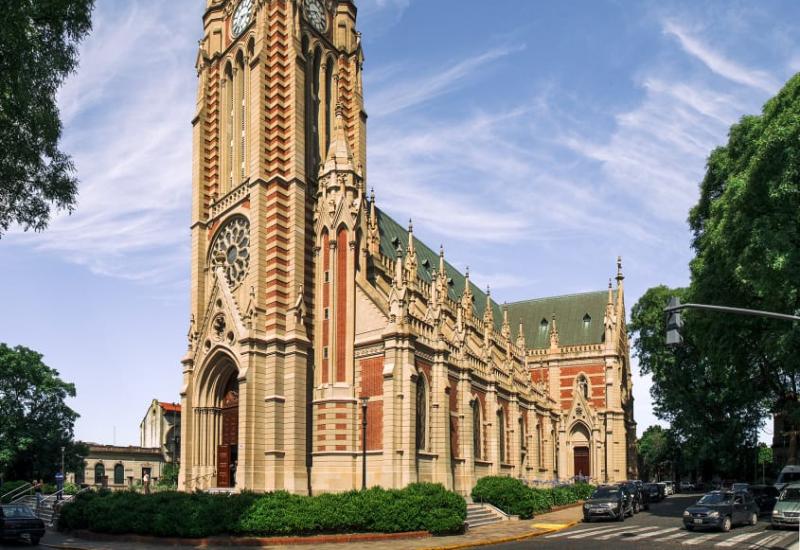
Basílica Nuestra Señora de Luján
It’s a massive church located 60 kilometers from the city of Buenos Aires. Its name refers to the Virgin Luján, the patroness of Argentina. Is famously known because every year thousands of people walk 60 kilometers to pay tribute to the Virgin. They ask for their families, for jobs, for good health, or simply walk to pay their respects to the Virgin. This peregrination always starts from the barrio of Liniers and people usually walk 15 hours straight.
Its origin story says that when they were first moving the Virgin, the animals carrying the cart stopped completely near the river Lujan and wouldn’t move till they removed the box that carried the Virgin. People took this as a sign and decided to leave her in Luján, which became her new home. It’s a must-see for its impressiveness and history. It also has a gift shop. The Virgin of Luján also has adherents in Uruguay and Paraguay.
Address: Av. Nuestra Sra de Luján 816 (Luján, Buenos Aires Province)
How to get there: Buses: Line 57, 276, 410. Train Sarmiento (from Moreno), Station Luján. Is one hour and fifteen minutes away by car from Capital Federal.
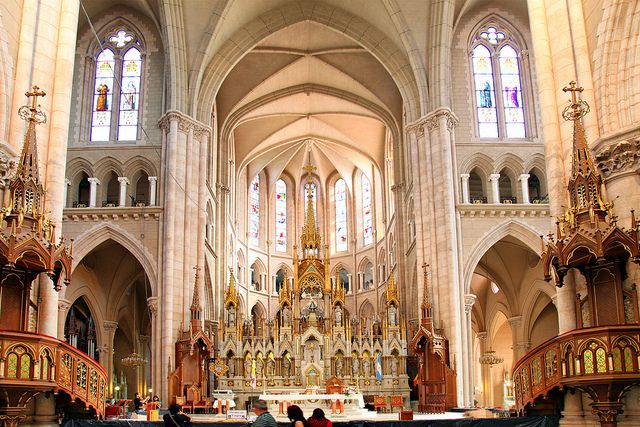
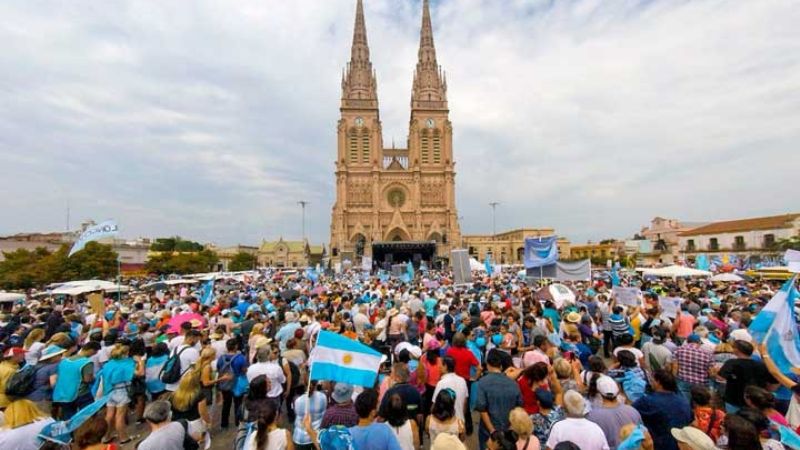
Catedral de La Plata: La plata Cathedral
This is the youngest on our list. Is located in the centre of La Plata, in front of Moreno Square and the City Hall. It’s a Neo-Gothic Cathedral with a red facade dedicated to the Immaculate Conception. It’s one of the biggest in the world. The place has an elevator that will take you 63 meters up to a viewpoint where you can have access to a full view of the city, the square and the river. It also has an interesting museum with two permanent exhibitions: one dedicated to the people who worked in the construction of the temple through the years, and the other one has a religious theme. You can book a guided tour of the museum for an affordable price. You can also visit the crypt where the founder of La Plata lies. They also offer the public different artistic workshops. On their website, you can find an online tour.
Address: Calle 14, La Plata (Buenos Aires Province)
How to get there: From Buenos Aires, you can take the bus Line 129 to get to the city of La Plata.
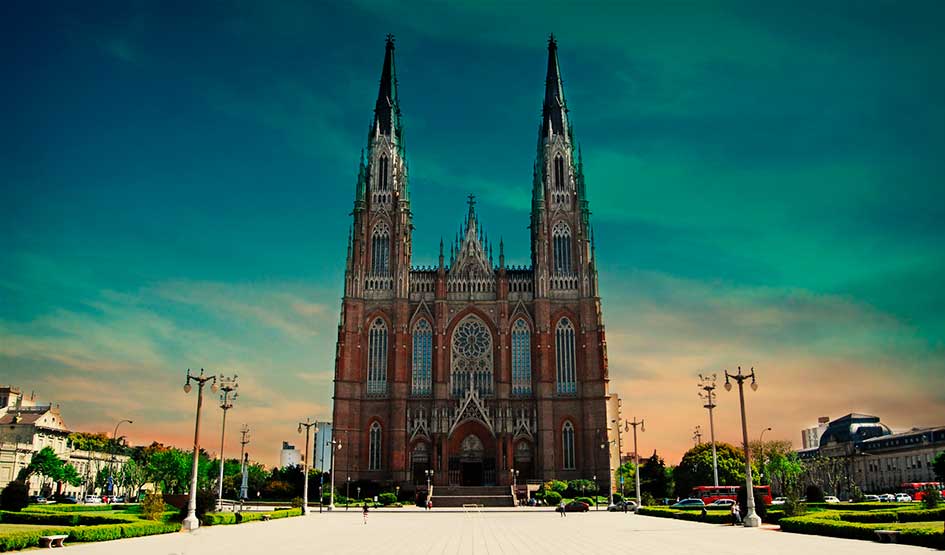
Catedral Metropolitana de Buenos Aires
In the centre of the city, in front of the historical Plaza de Mayo and the Pink House (the government building), there’s the Metropolitan Cathedral of Buenos Aires, the head office of the Argentine Catholic Church. It has a museum called Cardenal Jorge Mario Bergolio, with a special tribute to Pope Francisco which showcases a collection of items used by him in his time as Archbishop of Buenos Aires. They offer guided visits with audio guides in different languages available.
Address: San Martin 27
How to Get there: Subway: Line D, Station Catedral, Line A, Station Perú, Line E Station Bolivar. Buses: Line 105, 111, 33.
According to the Argentinian Research Center, CONICET, more than half the Argentine population practices Catholicism one way or another. But even with an Argentine Pope and all, Catholicism is increasingly dwindling, people are reaching out to other religions like evangelism or describing themselves as non-religious. However, we believe that beautiful buildings dedicated to worship will remain for years to come, and for people around the world to visit.






